
愛國青年看《滿江紅》,驚覺自己才是金人,以為是岳飛,原來是秦檜的支持者;金朝、清朝、中共能代表中國嗎?
https://www.youtube.com/watch?v=x0Z3z2ZvbZA

愛國青年看《滿江紅》,驚覺自己才是金人,以為是岳飛,原來是秦檜的支持者;金朝、清朝、中共能代表中國嗎?
https://www.youtube.com/watch?v=x0Z3z2ZvbZA
法澳外交部长和国防部长会谈 发联合声明加强挺台力度
法国与澳大利亚外交部长和国防部长30日于巴黎展开会谈,会后公布第2份2+2联合声明,内文强烈反对中国武力威吓、破坏稳定,相较于首份声明,挺台论述明显升级。此外,两国也达成协议,接下来将替乌克兰生产炮弹以抵御俄罗斯入侵。
法国与澳大利亚外交部长和国防部长在巴黎会谈,公布第二份2+2联合声明
法国与澳大利亚外交部长、国防部长30日巴黎会晤展开“2+2部会磋商”(Ministerial Consultations)。会后两国公布继2021年8月30日后的第2份法澳2+2联合声明,内容强烈反对中国武力威吓、破坏稳定,另重申不仅支持台湾参与国际,更将深化与台关系。
法国外交部长科罗那(Catherine Colonna)、国防部长勒科尔尼(Sebastien Lecornu)及澳大利亚外交部长黄英贤(Penny Wong)、国防部长马勒斯(Richard Marles)在30日的联合声明中表示双方将致力合作,共同支持台湾参与国际、深化与台关系,并重申台湾海峡和平稳定的重要性。
对此,台湾外交部周二(31日)发布新闻稿表示高度欢迎并给予肯定。并称此声明展现法、澳两国政府坚定友台立场,也凸显台海和平是维护自由与开放的印太区域乃至国际社会稳定繁荣不可或缺的一环。
联合声明写了什么?
根据2国外交部公布的联合声明,其中第24条写道:“法澳外交暨国防2部部长共同强调台湾海峡和平与稳定的重要性,呼吁透过对话和平解决两岸问题,而非威胁、武力或强制手段。”并称:“部长重申反对单方面改变现状的立场,承诺在符合国际组织章程規范之条件下,双方共同努力支持台湾有意义参与国际组织,另重申将持续深化与台湾经济、科技、贸易、技术及文化领域之关系”。
另外,声明第23条则指出,法、澳两国“强烈反对”在南海上威吓与破坏稳定的行为,包括“争议项目的军事化”。“部长强调持续合作以支持各国能于南海行使权利与自由的重要性,符合联合国海洋法公约(UNCLOS),包含航行与飞越自由”。
澳大利亚外交部长黄英贤与国防部长马勒斯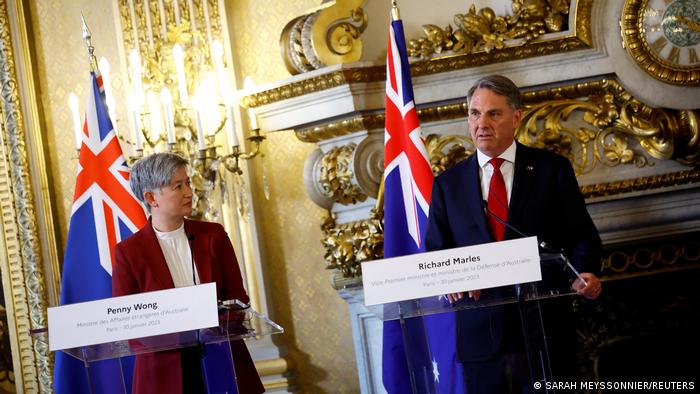 澳大利亚外交部长黄英贤与国防部长马勒斯
澳大利亚外交部长黄英贤与国防部长马勒斯
台湾中央社报道,法澳2021年的首度2+2会议联合声明即强调台海和平的重要,并表态挺台参与国际组织,时隔一年新版的声明多在措辞、论述及语调出现差异,对台湾支持力度升级。
报道指出,延续2021年8月30日上一份声明内容,两国此次重申对维吾尔族人权侵害的严正关切;对香港自治、权利与自由持续被侵蚀的状况也表示关切。
华东師范大学澳大利亚研究中心主任陈弘30日接受《环球时报》记者采訪时表示,总体而言,目前中国和澳大利亚两国的关系在向好发展,因此澳大利亚没有必要在涉及中国的问题上制造紧张气氛及进行无谓的挑衅。
他认为,自美国推出所谓的“印太战略”以来,美国一直怂恿欧洲国家入局搅乱印太地区稳定形势。与此同时,一直将美澳同盟奉为对外政策基石的澳大利亚,需要稳固和美国的战略关系,自然也要拉近与欧洲国家的关系。
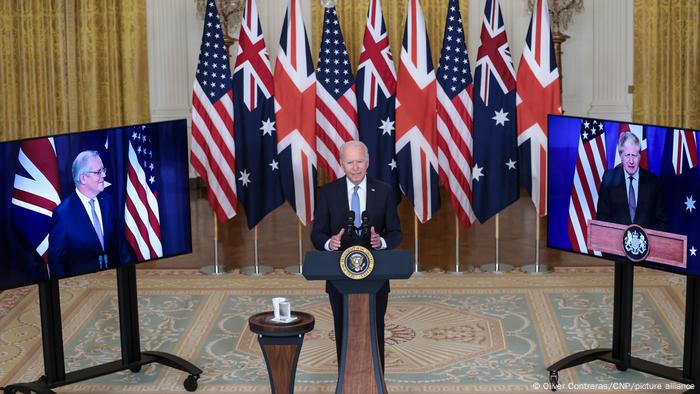 美国、英国与澳大利亚于2021年9月15日宣布建立新军事安全联盟AUKUS
美国、英国与澳大利亚于2021年9月15日宣布建立新军事安全联盟AUKUS
此外报道称,澳大利亚与日本、印度等国都进行过“2+2”部长级对话,与法、英进行“2+2”会谈也属正常。陈弘说:“具体来说,澳大利亚防长和外长出访英国是希望除了AUKUS以外,两国还能在经济、政治上寻求更多利益;出访法国则是希望从军事和外交上修补与法国的关系,从而进行自身战略布局。因此,二人此次外访确实有针对性,但并不完全指向中国。”
中澳将展开人权对话
英国《卫报》报道,随著中国与澳大利亚两国外交关系解冻后,中国已表示愿意在9年内首次恢复以人权为重点的专门对话。
报道指,中国驻澳大利亚大使肖千暗示,这一提议的条件是澳大利亚采取“建设性的态度”,两国关系恢复到更“正常”的基础上。但肖千强调,“以言论自由的名义进行批评、抹黑中国或诋毁中国共产党是没有帮助的。”
当被问及对肖千说法的回应时,外交和贸易部向《卫报》表示,政府在提出对中国人权的关注方面一直持续不间断的。
“澳大利亚政府已经并将继续就人权问题直接向中国提出主张,包括在最高级别”,该部发言人说。
该部发言人说:“正如外交部长所说,澳大利亚政府采取一切可能的策略来维护人权,以符合我们的价值观和利益。”
澳法为乌克兰生产炮弹
法国和澳大利亚防长30日在联合新闻会上宣布,两国接下来将“联手制造数千枚155毫米口径的炮弹来协助乌克兰”。希望今年第一季就能开始交付。
澳大利亚防长马勒斯说:“澳大利亚具备一些独特的能力,澳法两国在供应这类弹药方面可以携手合作。”
法国防长勒科尔尼补充说,根据这项协议,两国将一同承担军援乌克兰炮弹的成本,155毫米口径炮弹将由法国武器制造商奈克斯特系统公司(Nexter)负责生产,火药则由澳大利亚提供。
法新社报道,澳大利亚曾在2年前突然撕毁与法国合作建造12艘攻击型(Attack-class)柴油动力潜舰的合约,转而向美国和英国购买核动力潜舰,触怒巴黎当局。如今澳法双方达成上述协议,展现太平洋盟国之间设法修补关系的努力。
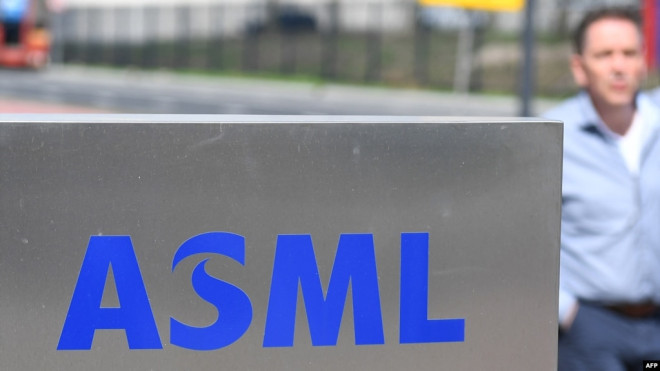
中共真急了!秦刚找上门 求荷兰
中共外交部的一篇新闻稿说,秦刚在通话中表示,中方愿同荷兰“共同维护国际产业链供应链稳定,维护开放而非分裂、有序而非混乱的国际贸易环境。”这份新闻稿还称,胡克斯特拉表示荷兰愿与中方密切各层级交往,包括深化经贸合作,“荷方将继续以负责任方式处理对华经贸事宜。”
美国媒体报道说,上星期五,荷兰和日本官员在华盛顿与美国白宫国家安全顾问沙利文举行会谈,并就美国自去年10月以来一直试图说服盟友实施的对华芯片技术出口限制达成了协议。不过,三个国家的官员都没有公布协议的内容。
此前,路透社援引消息人士的话说,美国与荷兰官员可能会在上星期五当天达成协议,但有可能不会当即做出宣布。
拜登政府去年10月宣布了一项影响深远的出口禁令,禁止美国以及任何采用美国相关技术的国家向中国出售高端芯片及芯片制造设备,希望以此遏制中国将这些高端产品和技术用于军事目的,并且一直在说服盟友国家采取类似行动。
荷兰的阿斯麦(ASML)公司是世界上最先进的半导体光刻系统的制造商之一,这使得荷兰成为华盛顿推动对北京实施芯片限制的关键。
阿斯麦公司是全球半导体生产供应链中关键的一环,占据60%以上的光刻机市场份额,也是全球唯一一家能够供应七纳米及以下芯片所需要的极紫外光刻机(EUV)的厂商。阿斯麦出口中国的主要是生产七纳米以上的深紫外DUV光刻机。公司首席执行官温宁克上星期三说,尽管美国去年10月宣布对中国实施芯片出口限令,但是阿斯麦对中国的出口目前没有变化。他称,仍能向中国出口DUV光刻机。/public/mcm/images/202301/6d6b62b7-50cd-4eeb-9fe0-3aedcdc60159.jpeg) 有分析指出,秦刚此举显示了对西方加强芯片管制动作的担心。如果只是美国单方面对中共采取芯片出口管制的动作,对中共的杀伤力还不算太大。如果连欧洲、日本都加入,那会使得管制的效果大大增强。未来西方会越来越收紧各类高科技技术的出口,西方与中共在科技上脱钩已经成为趋势。
有分析指出,秦刚此举显示了对西方加强芯片管制动作的担心。如果只是美国单方面对中共采取芯片出口管制的动作,对中共的杀伤力还不算太大。如果连欧洲、日本都加入,那会使得管制的效果大大增强。未来西方会越来越收紧各类高科技技术的出口,西方与中共在科技上脱钩已经成为趋势。
《华尔街日报》30日的文章说,荷兰和日本政府迄今为止对协议的实际细节保持沉默,是因为两国可能担心来自中共的报复,中国一直是芯片制造工具的大客户。
“如果美国及其盟友同意进一步加强对中共的限制,可能会有更多方法可以使用。SemiAnalysis 首席分析师(Dylan Patel)在一份时事通讯中表示,一些分析师表示,目前的(出口)限制可能还不够:阻止向中国出售新工具是不够的,因为该国仍可以使用其现有机器。例如,他建议限制(出口)光刻胶的出货量,光刻胶是一种用于光刻的光敏材料。日本公司是制造这种材料的领导者。日本东京电子公司在制造在硅片上涂覆和显影光刻胶的设备方面处于主导地位。”文章写道。
文章还敦促美国和盟友携手共进。文章说,美国明智的做法是向其盟友寻求帮助,而不是与中国(中共)打一场单方面的技术冷战。这些最新限制不会完全阻碍中国(中共)芯片产业,但它们发出联盟团结的强烈信号,甚至可能预示着进一步措施即将出台。对于北京和中国(中共)芯片业来说,这可能是最新行动中最令人焦虑的方面。
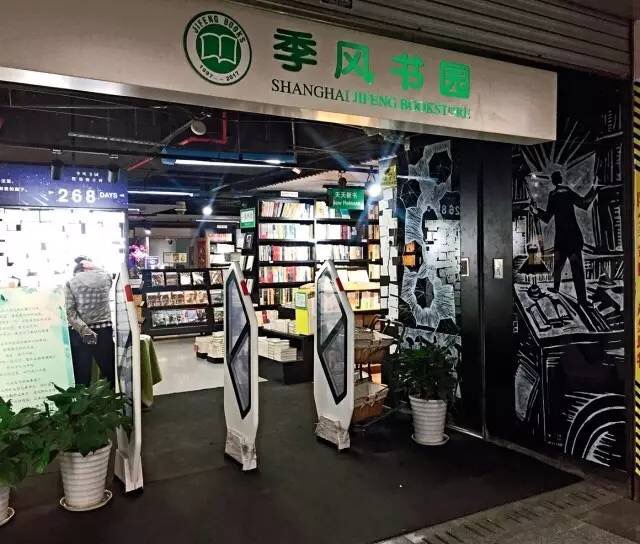
上海“季风书园”店主之妻回中国探亲遭限制出境
上海独立书店“季风书园”2018年因政治原因被迫关闭后,店主于淼一家移居美国。最近传出消息称,于淼的妻子谢芳去年回国探亲后遭限制出境至今已经五个月。
1月17日在微信公众号“季风微读圈”发布了据传是谢芳撰写的《给我出境自由,让我拥抱我的儿女》一文,描述了事情的具体经过。文中提到,她于2022年1月12日从美国回到上海照顾生病的母亲。之后因疫情被封控在家,解封后原定于8月1日前往美国。不过当她要出境时,却在浦东机场被边检人员拦下,指她违反《出入境管理法》中危害国家安全内容,限制其出境。
谢芳写道,上海公安曾多次约谈她,并且告知她是无辜的,只要于淼回中国接受调查就能换回她的出境自由。她强调:“但我丈夫是两个未成年女儿的境外唯一监护人,如果撇下孩子们回国,却面临夫妻二人都被限制的情况,那我们家庭岂不就此崩塌?”她在文中向当局喊话:“连坐或人质都是被现代文明社会所唾弃的,任何一个人,都不想自己的家人有朝一日会逢此厄运。一旦这种规则兴起,就没有一个人能够逃脱。倘若你们爱你们的子女,那么就应该给我自由,让我去拥抱我的儿女们。”
希望获美国政府关注
美联社报导,于淼在没有事先告知妻子的情况下,在微信上发布了她的信。这篇文章在发布后几个小时就从微信上消失了,但仍引起了中国媒体的关注,于淼在推特账户上的类似帖子吸引了近17万次浏览。他说,当地警方隔天告诉谢芳,她丈夫的举动会使情况更难解决。于淼表示,他向媒体透露此消息,是因为希望能在美国国务卿布林肯2月初访问中国之前获得美国政府的关注。他说:“虽然这希望渺茫,但现在,我没有任何其他更好的办法了。”
于淼不愿提供其妻子的联系信息,理由是担心她的安全。然而,在一次有美联社记者参加的通话中,谢芳确认是她写的这封信,但拒绝进一步评论。香港媒体《明报》本周致电上海市公安局了解详情时,宣传处人员表示电话上不方面答復,要求把记者证、采访内容传真给局方,但却在《明报》记者询问传真号码之后,随即将电话挂断。
警方质疑于淼发文批评习近平
曾被视为上海的文化地标之一的季风书园由三辉图书总策划人严搏非于1997年创办,除了卖书,还举办讲座等活动。 2013年,于淼接手书店。 2018年,季风书园最后两间店分别因租约问题以及向官方申请图书经营许可证未获批准而关闭,于淼在隔年赴美国攻读政治学硕士,谢芳以学生签证持有人的配偶身份同行。于淼提到,公安局的一名代表当时告诉他,他的书店接待了“太多敏感的学者”和举办太多“敏感的谈话”。
原本计划在妻子返美后也去中国探亲的于淼如今取消了自己的计划,这对夫妇认为,问题出在三篇被冒名的文章上,警方指责于淼在美国发表了关于中国国家主席习近平、俄罗斯总统普京以及参与中国1989年民主抗议运动者的文章。于淼否认是这些文章的作者,但警方告诉谢芳,他们追踪到了与于淼有关的一个IP地址。于淼说,他的妻子可以在中国境内正常生活,大部分时间都在上海的家中度过,但他感到很内疚,因为他的妻子并没有在季风书园工作,却受到他的影响。
许多国家可以禁止被指控犯罪或需要作为法律诉讼证人的人离境,但学者们认为,中国使用的旅行禁令超出了这些国际规范,批评者将出境禁令比作劫持人质。中国政府此种做法对其公民和外国人都有影响,如美国政府就在对前往中国的旅行建议中将出境禁令作为一项风险。曾在2017年被阻止离开中国的悉尼科技大学教授冯崇义表示,中国当局经常进行这种威胁,但他认为,通过媒体宣传起到了关键作用,使他和其他人在被禁止出境后得以离开。
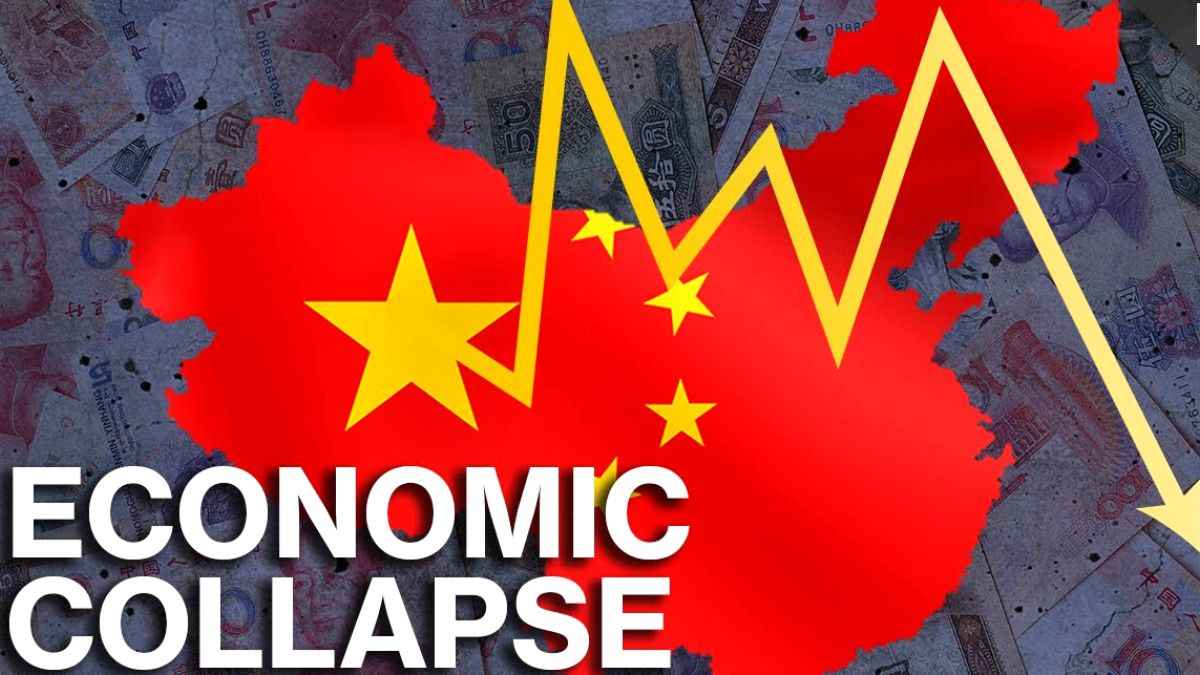 How Soon Will Cina Implodes ? Cina’s debt-based interest payments top a trillion yuan for first time
How Soon Will Cina Implodes ? Cina’s debt-based interest payments top a trillion yuan for first time
Total interest paid on bonds at local levels in China last year increased by nearly 21 per cent from 2021 as Beijing ramped up efforts to stabilise the nation’s economy
Analysts expect local governments to issue a record-high 7.5 trillion yuan worth of bonds this year, and much of that will go to infrastructure projects
The issuance of local government bonds is likely to rise to a record high of more than 7.5 trillion yuan this year, analysts say, as China will continue to rely on infrastructure spending to stabilise the economy.
Interest payments on local government debt in China exceeded a trillion yuan for the first time last year as Beijing called for enhanced efforts to steady the economy, and analysts say public debt in the world’s second-largest economy could continue to surge to an all-time high in 2023.
Local governments had to pay a total of 1.12 trillion yuan (US$165 billion) in interest on bonds in 2022, up from 928 billion yuan in 2021, according to data released by the Ministry of Finance on Sunday.
And a total of 3.67 trillion yuan worth of local government bonds will mature in 2023, according to financial data provider Wind.
The data, released by the Ministry of Finance, reflects the growing pressure of debt repayment among local governments. But since regional authorities often also borrow heavily off-budget, the overall debt to gross domestic product (GDP) could, in practice, be considerably higher than official data.
China’s debt-to-GDP ratio in the third quarter of 2022 rose from 273.1 per cent at the end of the second quarter to 273.9 per cent, or 0.8 percentage points, according to data released last year by the National Institution for Finance and Development.
The world’s second-largest economy has been struggling to recover after its abrupt abandonment of zero-Covid restrictions last month. There are signs that consumption and tourism picked up during the weeklong Lunar New Year holiday, and local governments have been ramping up efforts to restore manufacturing to boost their economies.
A total of 7.37 trillion yuan worth of local government bonds were issued in 2022, down from 2021’s 7.49 trillion yuan, Ministry of Finance data showed.
But the amount is likely to rise to a record high of more than 7.5 trillion yuan this year, according to Thunder Fund, a wealth-management company based in Shanghai, as China will continue to rely on infrastructure spending to stabilise the economy, leading to more sales of special-purpose bonds.
“In 2022, 4 trillion yuan worth of special-purpose bonds were issued for construction projects. Many projects will still need financial support after construction begins. This requires the total amount of special-purpose bonds to remain at a certain level [this year],” Thunder Fund said in a note on January 17.
Despite questions over the effectiveness of Beijing’s investment-led stimulus, analysts at the China Chengxin Credit Rating Group said the issuance of new special-purpose bonds is likely to stay at a high level, with more than 1 trillion yuan worth of such bonds expected to be issued in the first quarter of this year.
“The returns of special-purpose debt projects are low and are already declining. Under financial pressure, it is necessary to further improve the debt-repayment-guarantee mechanism to avoid the risk of default,” the Beijing-based rating agency said in a note on Saturday.
China-funded infrastructure across Africa force difficult decisions for its leaders
While Beijing has also pledged to keep financial risks under control by promoting a series of measures, including debt-restructuring among local governments, concerns over a prolonged downturn in China’s property market and rising geopolitical tensions last year triggered a sell-off in yuan-denominated assets.
Risks of defaults from local government debt – especially their off-budget lending through so-called local government financial vehicles – have also spooked investors.
Swiss bank UBS said in a note earlier this month that the potential for a hard landing in China’s property market, a capital exodus associated with currency depreciation, and slow structural reform progress, are among the key risks that need to be addressed by the Chinese government.
“Any government policies that do not adequately address these risks could result in a shock to the market,” UBS said.
“For example, an excess of stimulus policies could pose a risk to the transition from an investment-driven to a consumption-driven economy and increase the debt of [local] governments and state-owned enterprises.”

US-Japan-Netherlands alliance to kill China’s semiconductor industry
An agreement between the United States, Japan and the Netherlands to restrict exports of “some” advanced chip-making equipment to China has triggered debate over the scale of damage that this could inflict on Beijing’s semiconductor self-sufficiency drive, with billions of dollars of investments at stake.
That deal was reached in talks that concluded in Washington on Friday, creating a powerful alliance that will undercut Beijing’s ambitions to build its own domestic chip capabilities, according to a Bloomberg report, which cited people familiar with the negotiations.Details of that pact, however, remain unknown. There is no plan for a public announcement of the restrictions, and actual implementation could take months as Tokyo and Amsterdam finalise legal arrangements, according to the report.
Chinese Foreign Ministry spokesman Mao Ning said on Monday at a briefing that the US-led agreement is not only harmful to all concerned parties, but threatens the stability of the global semiconductor supply chain.
A Naura Technology Group executive, who declined to be named, said the new alliance presents a significant escalation from unilateral US export controls, especially if any of the 28-nanometre lithography process equipment in the market were included in the ban. Naura is China’s top semiconductor manufacturing equipment maker.
Commercial chip manufacturing using 28-nm process machinery started in 2011. 28-nm chips are used on a wide range of applications, including central processing units, graphics processors, high-speed networking chips, and integrated circuits that power smartphones, tablets and other consumer electronics devices.
So-called ultraviolet lithography equipment, which uses laser technology to basically carve a pre-designed circuit onto a wafer, is at the centre of the joint export control pact, according to a report authored by Jefferies analyst Edison Lee on Monday.Dutch firm ASML Holding dominates this market, with a nearly 90 per cent share on the back of its highly advanced extreme ultraviolet (EUV) machines. “EUV is a must for 5-nm semiconductor technology or below, and the Netherlands agreed not to sell EUVs to China since 2019,” Lee said.
EU joins US in ‘depriving China of the most advanced chips’, official says
ASML confirmed in a statement on Sunday that the scope of agreed export controls could go beyond advanced lithography technology. Before export controls come into effect, “it has to be detailed out and implemented into legislation which will take time”, the company said.
Alternative lithography equipment vendors are Japan’s Nikon Corp and Canon, which make less-advanced deep ultraviolet (DUV) systems. There are several versions of DUV, and the most advanced one is called ArF Immersion DUV, which enables chip technology processing nodes between 45-nm and 7-nm.
If ArF Immersion DUVs become 100 per cent restricted from being sold to China, mainland chip foundries such as Semiconductor Manufacturing International Corp, Hua Hong Semiconductor, Shanghai Huali Microelectronics Corp and ChangXin Memory Technologies “would have trouble expanding capacity in even mature nodes” like 28-nm, Jefferies’ Lee said.
He indicated that if the ban applies only to 14-nm or below chip-processing technology, “it may be hard to enforce since tracking what the machine is used for over time is challenging”.
Echoing that comment, Nicolas Gaudois, head of Asia-Pacific technology research at UBS, said: “It is quite hard for the equipment companies to show that the equipment being shipped is actually not [falling] in the scope of [restrictions].”
Speculation about the US-Japan-Netherlands pact reflects intensifying uncertainty for China’s semiconductor ambitions, months after the Biden administration implemented updates that further restrict China’s ability to obtain advanced chips, develop and maintain supercomputers, and manufacture advanced semiconductors.
“We believe the lack of official announcements and details could mean that Japan and the Netherlands have agreed only in principle, but not yet to the details,” Jefferies Lee said. “The biggest sticking point is likely what kind of lithographic machine should be restricted.”
Further restrictions on DUV equipment could limit China’s output in mature chip technologies, according to Arisa Liu, a senior semiconductor research fellow at the Taiwan Institute of Economic Research.
Still, China’s imports of lithographic machines rose to about US$4 billion in 2022, up from US$1.3 billion in 2017, according to the Jefferies report. It said import statistics show that China has increasingly relied on Japanese vendors, with lithographic machine imports from them growing to 33 per cent in last year from 27 per cent in 2017.

US military is preparing for war, Chinese analysts say
Risk of conflict between Chinese, US militaries has increased as both sides boost deterrence capabilities, experts say
Top US commanders have predicted military conflict with China may happen in the near future
A warning by a US air force commander that a military conflict with mainland China could come as early as 2025 implies the American military is gearing up combat readiness over Taiwan, according to analysts, who said the People’s Liberation Army (PLA) would also boost its deterrence capabilities. The latest warning was from Mike Minihan, the head of the Air Mobility Command, who said war over Taiwan might happen as soon as 2025.
In an internal memorandum that first emerged on social media on Friday, Minihan, a US four-star general, urged his commanders to push their units to achieve maximum operational battle readiness this year.
“Xi’s team, reason, and opportunity are all aligned for 2025,” Minihan said, adding that a presidential election on the self-ruled island next year would offer Chinese President Xi Jinping an excuse for military aggression. “It seems like the US military is using the warnings to declare its stance clearer day after day: if mainland China intends to attack Taiwan, then the Americans should react with military intervention,” said Zhu Feng, a professor of international affairs at Nanjing University.
 “Such warnings may encourage American pilots to become more aggressive when dealing with their Chinese counterparts on the front lines, increasing the risk of conflicts.”
“Such warnings may encourage American pilots to become more aggressive when dealing with their Chinese counterparts on the front lines, increasing the risk of conflicts.”
“The unprecedented anxiety over a war for Taiwan [in 1971] was caused by a lack of intercommunications and mutual understanding,” said Zhu, who blamed the ongoing deadlock on former US president Donald Trump’s strategy to use Taiwan as a key bargaining chip in his hardline China policy.
Sino-US tensions de-escalated after former US president Richard Nixon’s Beijing visit, with the two countries resuming diplomatic ties in 1979.
Minihan’s warning came just a few months after Admiral Michael Gilday, chief of US naval operations, said in October that Beijing might attack Taiwan by the end of 2022.
Gilday’s time frame was based on an earlier assessment contributed to by Philip Davidson, now a retired admiral who was then head of the US Indo-Pacific Command.
Earlier last year, Davidson said that a new crisis in the Taiwan Strait could take place in 2027, adding that Beijing might try to unify Taiwan with mainland China “within the next six years”.
Chinese military experts and Sino-US analysts said all signs indicated that Washington’s resolve to intervene on behalf of Taiwan was becoming stronger.
Song Zhongping, a former PLA instructor, agreed that the risk of conflict between the Chinese and US militaries had increased as both sides have been intensifying combat readiness training, with hostilities also growing.
“The US generals want to play up Beijing’s plan of ‘Taiwan reunification’ by focusing on using force to ask for bigger military budgets from Congress,” Song said, adding the American military needs a strong enemy like China.
“For the PLA, the only way is to boost its combat capability in response, as the US will not let the Chinese military complete its modernisation, which is one of its means to restrain a rising China.”
Beijing-based naval expert Li Jie said the PLA would focus on strengthening its air and sea capabilities, as well as increasing the ranges of its missiles.
“The US military’s prediction is correct, the Taiwan Strait is the most likely area to have military conflicts, as Washington has crossed Beijing’s bottom line to encourage Taiwan independence, which in no way allows for compromise,” Li said.
“Only when the PLA beefs up its deterrence capabilities can it stop the American military’s intervention on the Taiwan issue.”
Tensions over the island are expected to top the agenda when US Secretary of State Antony Blinken visits China next month.
“Both sides should try to find a way out of the deadlock over the Taiwan issue … which could trigger a major crisis in the region,” Zhu said.



Create a playlist at MixPod.com
